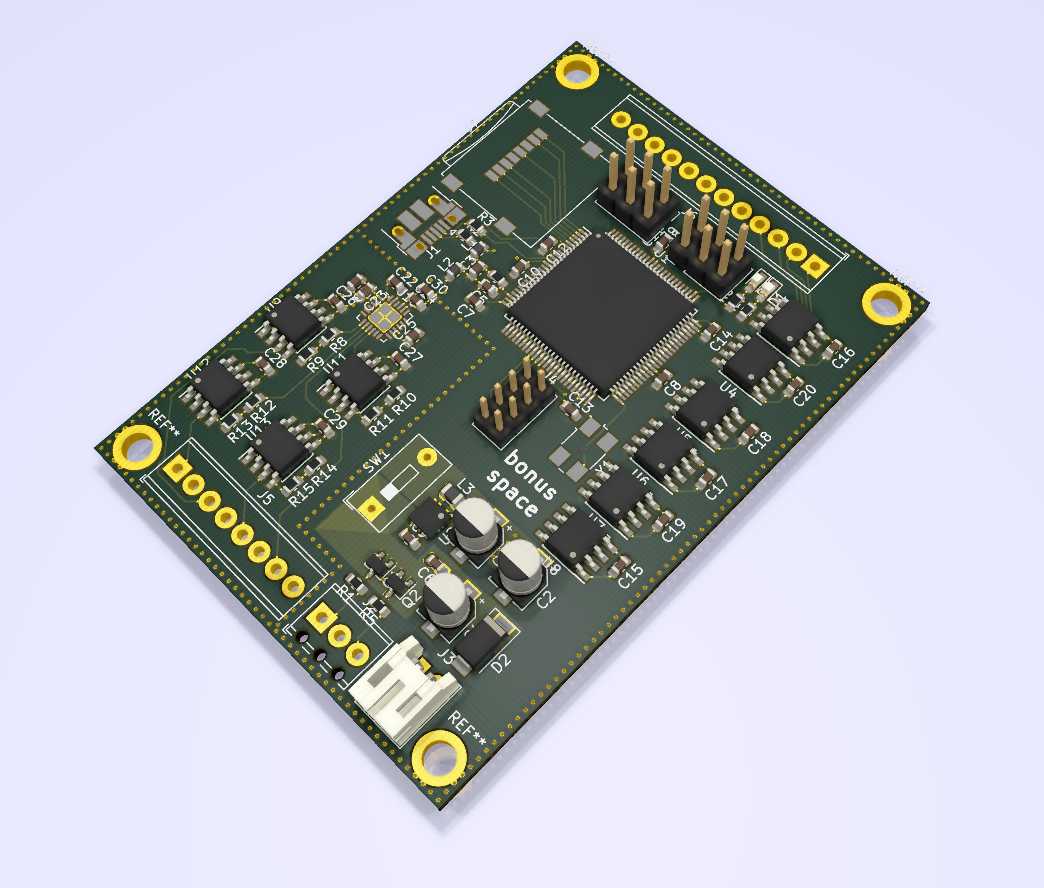Overview
Minerva is a versatile DAQ (Data Acquisition System) designed for use in Hermes II. It was initially designed to support a variety of instruments in the Hermes II mission package under the payload mission, but it is also meant to serve as a platform for any other data collection efforts. For example, a near duplicate will be used to support extra measurements near the motor section of Hermes II. Please see basic information relating to capabilities and revisions below. For detailed information, including instruction for use, please see Working with the DAQ.
Revision 0
The first iteration was designed on KiCAD 5. The board is compatible with:
- Thermocouples
- High Frequency Vibration Sensors
- Load Cell
Revision 1.IP (Instrumentation Package) is the specific name assigned to the DAQ used for the Hermes II Payload Mission. This version supports all the above, with a 40-pin female connector serving as the interface for 12 thermal sensors (thermocouples and PRTDs) instead of the 12-pin screw terminal block that is seen in Revision 1 and that only supports thermocouples.
Other features common between both of these versions include:
- Built-in SD Card on an independent high speed SDIO bus.
- MK64F processor (120 MHz ARM Cortex-M4)
- Power-on Toggle switch
- M3 mounting pattern.
- 2" by 2.8" dimensions.
Revision 1
Revision 1 solved numerous issues.
Changes made were:
- A 2.5 V reference was added in accordance with the datasheet of the ADS7951 (Reference designator U14).
- Pull up resistors were added to all SPI lines.
- a 10 nF capacitor was added between all thermocouple pairs in order to reduce common mode noise.
- Lines were moved off pins that are inaccessible from the Teensy HAL.
- LED driver MOSFETs were changed from SOT-323 to SOT-23 packages.
- VBAT was connected to +3V3 to allow all GPIOs to be operational at full voltage.
